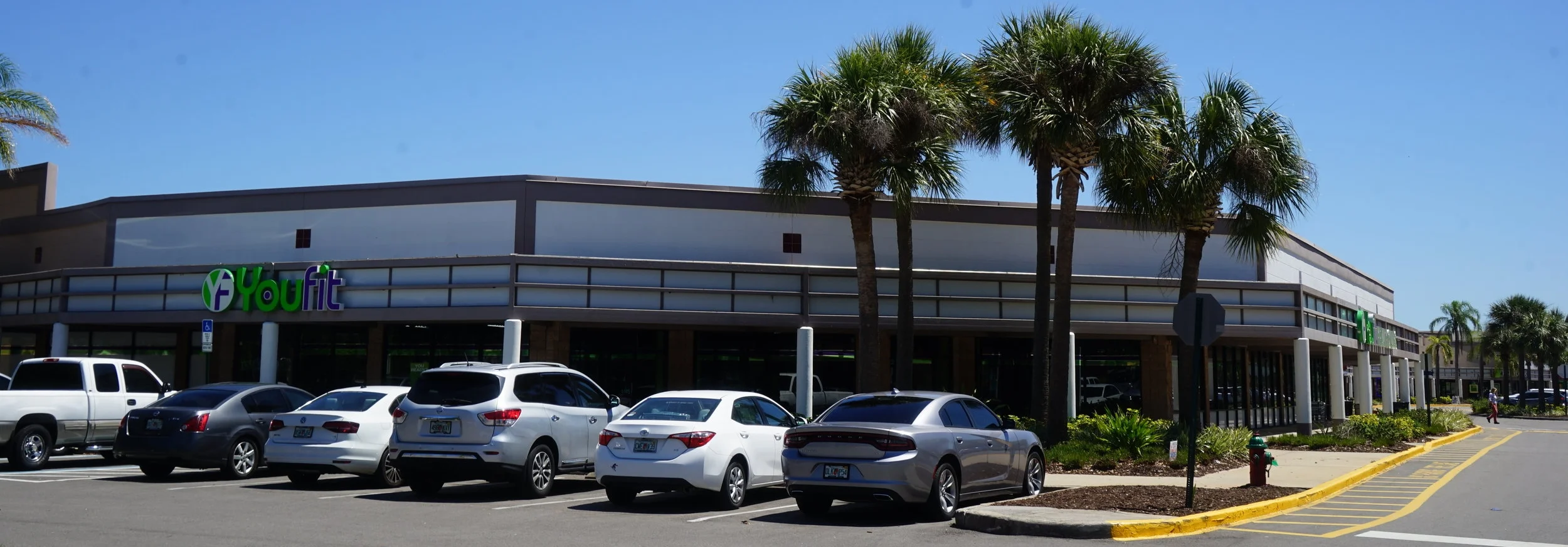Autonomous Vehicles and Retail: What Impact Should We Expect, and When?
Many Expect Autonomous Vehicles “AVs” To Revolutionize The Way People Transport Themselves
Retail’s Landscape Is Always Evolving: What AV-Related Innovations Should Landlords Consider?
Note: LBX typically underwrites investments to 3-7 year holding periods. We therefore evaluate potential impacts of emerging technologies and behaviors that may impact our centers and – at the end of the hold – their exit valuations. This month (in response to investor questions) we profile self-driving cars and their relationship with retail real estate.
There Is Significant Investment Capital Backing Autonomous Vehicles – For Good Reason
Autonomous vehicles (“AVs”) are expected to eventually have a transformative impact on our economy, our society, and numerous industries, including commercial real estate and by extension, retail. Some of the best potential economic and societal impacts are clear: the near-elimination of car accidents caused by human error and their associated costs and more free time from fewer commuting hours spent behind the wheel. Major corporations such as Alphabet (Waymo), Uber, GM, and Mercedes are investing hundreds of billions of dollars in self-driving technology and logging millions of miles in test drives. To be clear: most experts believe full “Level 5” automation, with no human involvement or usage restrictions, is, at best, more than a decade away from widespread implementation. Most of the technology currently under development is defined as “Level 4,” or high automation. As these technologies hit the open market over the next several years, they will gradually force real estate owners to contemplate changes to traffic patterns and consumer behaviors that could be quite meaningful. For instance, the potential elimination of billions of square feet in parking space, which could be repurposed to more profitable uses, is an oft-cited impact of the technology. With respect to shopping centers, some of the open questions retailers will need to consider include determining how AVs will impact their supply chain decisions, in-store shopping experiences, and site selection.
Autonomous Vehicle Implementation Is Likely To Occur In Long-Haul Trucking First
Per discussions with AV experts, today’s primary drivers of AV implementation are (a) their potential impacts on costs and (b) where – at this stage in their evolution – they can operate the highest percentage of the time (generally speaking, sunny climates with flat landscapes, e.g. Arizona, favor testing). For those reasons, while AVs are accumulating millions of test miles, many believe the first large-scale implementation is likely to occur in the long-haul trucking industry. While self-driving trucks are larger and more complex to build than automobiles (in part because of their weight, an important consideration when braking), interstates have less variables to navigate than surface streets and a small fully automated fleet of trucks can make a large impact on shipping and employment costs. In October 2016, Uber – which acquired Otto, a self-driving truck company, for $680 million in 2016 – made its first road trip, transporting 51,744 cans of Budweiser within Colorado. Uber has since closed Otto and returned its focus to cars, but Level 4 trucks, which partner a driver with an autonomous truck, could hit the roadways within the next several years.
Cumulative Number of Driverless Car Investments (‘14 - ‘17)
Levels of Automation For On-Road Vehicles
If You Own A Shopping Center, Here’s A Potential Glimpse Into The Future
Areas where we believe shopping center owners will likely be first impacted by the advent of AVs include parking, home delivery, and errands. There are questions, as well, as to what kind of tenants will remain AV-resistant over the next several decades. Parking: AV usage has major implications for parking. America’s parking footprint – cited by the head of Gensler at 500 million spaces – is expected to shrink dramatically over time as AVs are implemented at scale. Researchers at the University of Toronto, for example, found that optimizing for AVs could increase the capacity of a parking lot by 62% because cars can park much closer together. In urban areas, where the underlying cost of land is high, this could be significant, as excess space could be repurposed with more of a pedestrian focus and/or a greater emphasis on revenue generation. Home Delivery: Today, Amazon Prime is dominant but Amazon, Alphabet, Uber and others are expected to eventually use fleets of driverless vehicles (and drones) for small package delivery. Growth in home delivery dovetails nicely with changing demographic trends, as younger shoppers are far more likely than older shoppers to order items online without visiting a physical store. Retailers are incentivized to drive in-store traffic, however, and while many products may lend themselves to commoditized deliveries, restaurants and other experiential retailers may eventually subsidize customer in-store visits, while customer data may be used for in-vehicle advertising purposes. Errands: The rise of AVs introduces the concept that a car can be productive without a driver. Today, US cars are estimated to lie dormant 95% of the time. A utopian scenario painted by AV enthusiasts is one in which your car drops you off at work, picks up your groceries and gets your kids from school, so that you don’t have to. A fully driverless future is many decades away but glimpses of potential restaurant, salon, and fitness competition are here: Toyota has launched its e-Palette concept (which can house a mobile gym) and Zume, which recently raised $48 million in Series B funding, is using robots to deliver hot, made-to-order pizzas to customers in the SF Bay Area.
Despite The Hype, There Are Numerous Hurdles To Clear Before AVs Are The Norm
There are many hurdles to overcome before AVs become commonplace. First, complex safety questions will need to be addressed – an AV may operate in a highly controlled environment but scale cannot occur until inclement weather, pedestrians, strange glares, and other variables can be navigated. Second, existing zoning and infrastructure – including roadways and parking lots – will need to be adjusted to accommodate AVs. Third, cultural preferences for owning and driving cars do not change quickly, particularly outside of gateway cities where people like driving gas-powered vehicles. Fourth, entrenched corporate interests can be expected to fight AV implementation. Auto insurers, for instance, generate $80 billion in annual revenue and stand to lose significant market share from AVs. Fifth, the economics of fleet ownership dictate they must be large in order to lower a company’s total cost of vehicle ownership. One AV hardware expert we spoke with believes the speed of scale “is being overstated” and pointed to the difficulties inherent in scaling fleets, including parking, charging and maintenance. Sixth, cybersecurity is an issue, as AVs are vulnerable to hackers. Seventh, driverless technology has a “last 10 feet” problem to address: AVs can deliver goods to your curb, but not your front door. Walking to your curb to interact with a robot is still considered to be a major barrier. Finally, AVs could lead to a different kind of congestion as compared to today’s traffic. The internal combustion engine freed streets from horse manure but introduced new problems and the future impact of AVs is difficult to quantify today. In our view, while AVs may certainly become as mundane as cell phones and airplanes someday, the next 10-15 years are likely to be more of a period of experimentation and learning than widespread AV implementation. Landlords have plenty of time to react.
Toyota e-Palette Concept
Zume Pizza Delivery Robot
Additional Quick Reads for Investors
The Economist: Self-Driving Cars Will Profoundly Change Lives
- High Level Overview of Potential Consequences
CBRE: On the Road: A Futuristic Look at SDVs and CRE
- Potential Impacts of Self-Driving Vehicles on CRE
PYMNTS: Future of Retail Deliveries w/ Autonomous Vehicles
- Coverage of Developments in Retail Delivery Space
TechCrunch: Nuro and Kroger Deploying SD Cars in Arizona
- Spotlight on Kroger’s Pilot Program in Arizona with Nuro
Gensler: The Game Changer for Cities
- Co-CEO of Gensler Discusses Future AV Impact on Cities
Morgan Stanley: Autonomous Cars
- Self-Driving the New Auto Industry Paradigm





